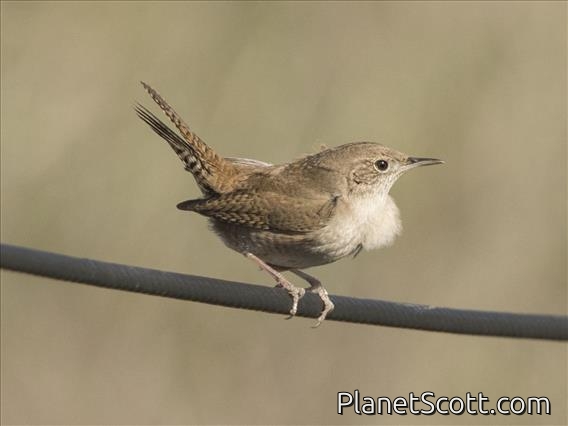Northern House Wren (Troglodytes aedon)

House Wren (Troglodytes aedon)
×


House Wren (Troglodytes aedon)
About Northern House Wren (Troglodytes aedon)
- Kingdom: Animals
- Phylum: Chordates
- Class: Birds
- Order: Perching Birds
- Family: Wrens
The northern house wren is a very small passerine in the wren family Troglodytidae. It is found in southern Canada, the USA and Mexico. It occurs in most suburban areas in its range. It formerly included many subspecies resident in South America and in the Caribbean that are now considered as separate species. The name troglodytes means "hole dweller", and is a reference to the bird's tendency to disappear into crevices when hunting insects or to seek shelter.
Source: Wikipedia
Visits
-
2004-06-20
Gwaai Haanas National Park, Canada -
2007-06-14
Cape May National Wildlife Refuge - Deleware Bay, United States of AmericaNear headquarters. -
2007-07-21
Hawthorne Hill Nature Center, United States of America -
2008-08-26
Elgin - Bluff Spring Fen, United States of America -
2009-06-10
Effie Yeaw Nature Center, United States of America -
2010-02-17
Tacambaro, Mexico -
2010-02-19
Volcan Nevado de Toluca, Mexico -
2011-05-28
Del Valle County Park, United States of America -
2011-05-29
Del Puerto Canyon and Mines Road, United States of America -
2012-05-20
Pyramid Lake, United States of America -
2012-07-08
Necedah NWR, United States of America -
2012-07-10
Arrowwood NWR, United States of America -
2012-07-11
Theodore Roosevelt National Park - South Unit, United States of America -
2012-07-13
Grand Teton National Park, United States of America -
2012-09-22
East Wash, United States of America -
2014-04-06
Delta Meadows State Park, United States of America -
2014-05-09
Cave Creek Canyon--Southwestern Research Station, United States of America -
2014-05-10
Cave Creek Canyon--South Fork, United States of America -
2014-06-07
Sunol Regional Wilderness--Visitor Center area, United States of America -
-
-
-
-
2018-04-22
Big Bend National Park, United States of America -
-
-
-
-
-
-
-
-
-
-
-
-
-
-
-
-
-




